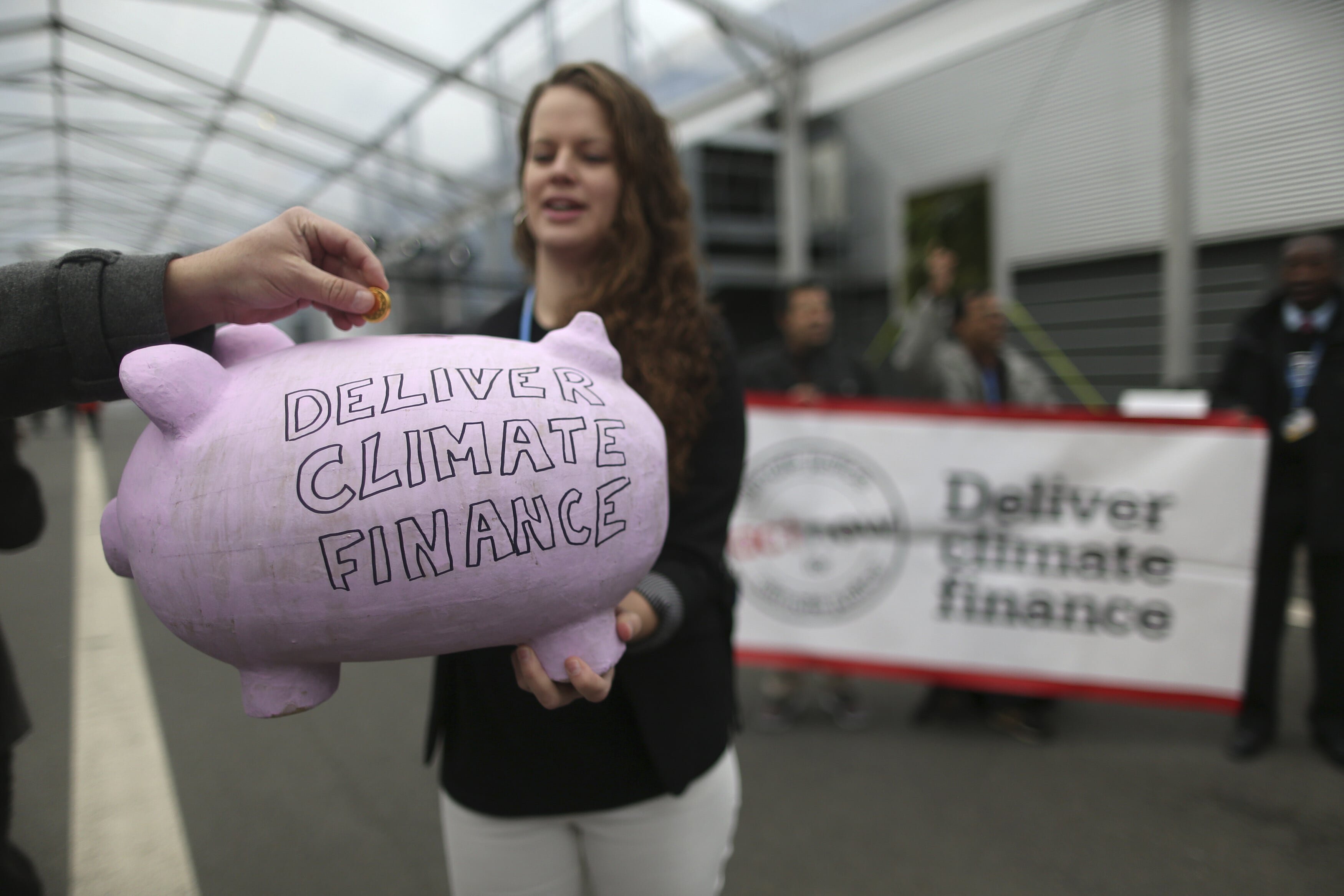Remittances could fall by $100 billion because of COVID-19 – here’s why that matters

The total value of remittances reached $714 billion in 2019.
Image: REUTERS/Thomas Peter
Stay up to date:
Social Protection
- Remittances – the money sent home by individuals to family and friends – are in crisis because of the global economic downturn.
- It comes after the total value of remittances reached $714 billion in 2019.
- At least 60 low- and middle-income countries depend on remittances for more than 5% of GDP.
- Economists and campaigners are urging for reductions in transfer fees and greater support for migrants in host countries.
The scale of remittances is vast. But it’s under threat.
The money sent home by around one billion workers overseas or internally to their families is collectively higher than either foreign direct investment or official development assistance. It was almost three-quarters of a billion dollars last year – a record sum.
But the World Bank estimates the global slump will wipe 19.7% – or $109bn – from the portion of this money that flows to the Low and Middle-Income Countries (LMICs) that need it most. Those economies are now bracing for the impact.
So far, the UK and Swiss governments have led a call for lower transfer fees, and economists and campaigners are calling for more support for migrant workers. But damage may be unavoidable.
A vital flow
Remittances can help build a house, pay medical bills or send a child to school. But they don’t just help the family and friends to whom they are sent. They’re a central part of many economies, too.
According to the World Bank and the global migration think tank KNOMAD, in at least 60 LMICs, remittances account for more than 5% of GDP.
What is the World Economic Forum doing to manage emerging risks from COVID-19?
But in several countries it’s much more: Tajikistan and Bermuda, for example, both depend on remittances for more than 30% of GDP. Other heavily-dependent countries include Nepal and Haiti. And the countries which rely on remittances the most often have economies which are already fragile.
According to the International Monetary Fund (IMF), this money often helps even out trade deficits, and provides a key source of tax revenue – particularly in terms of indirect taxes like value-added tax and sales tax.
A perfect storm
The extent of forecast recessions and depressions around the world are yet to be realized. But given the dependence of certain nations and populations on remittances, the conditions are in place for maximum impact.
These impacts are likely to be magnified by two factors: first, the pattern the coronavirus has taken; second, the intimate relationship between economies hosting migrant workers and their home countries.
It is a cruel irony that an estimated 75% of migrants work in nations where three-quarters of the COVID-19 cases have been reported.
This will magnify the economic impact of the problem. Economists describe remittances as ‘countercyclical’: when times are hard migrants can leave their home and send back valuable income, countering domestic economic shocks. However, the reverse can also be true.
And the consequences could be severe. For example, the IMF identifies potential downturns in some Gulf states as having the potential to trigger an exodus of migrant labour from the Middle East, North Africa and Southeast Asia.
Accept our marketing cookies to access this content.
These cookies are currently disabled in your browser.
This, in turn, could ratchet-up unemployment in home countries, pile pressure on fragile public health systems and even potentially exacerbate the refugee crisis.
Taking action
The quickest way to help migrant workers is to lower their costs – which at the moment can be significant. For example, overseas workers from sub-Saharan Africa who send money home pay, on average, one dollar in every 10 in payment transfer fees. Globally, fees average almost 7%.
“Quick actions that make it easier to send and receive remittances can provide much-needed support to the lives of migrants and their families,” urges Dilip Ratha, head of migration think tank, KNOMAD.
“These include treating remittance services as essential and making them more accessible to migrants.”
The World Bank urges countries – both the hosts and the original homes of migrant workers – to put in place effective social protection systems.
Next year, the Bank estimates that remittances to LMICs will recover – although not to the levels seen in 2019. But the road to that recovery is likely to be a bumpy one.
Accept our marketing cookies to access this content.
These cookies are currently disabled in your browser.
Accept our marketing cookies to access this content.
These cookies are currently disabled in your browser.
Don't miss any update on this topic
Create a free account and access your personalized content collection with our latest publications and analyses.
License and Republishing
World Economic Forum articles may be republished in accordance with the Creative Commons Attribution-NonCommercial-NoDerivatives 4.0 International Public License, and in accordance with our Terms of Use.
The views expressed in this article are those of the author alone and not the World Economic Forum.
Forum Stories newsletter
Bringing you weekly curated insights and analysis on the global issues that matter.
More on Financial and Monetary SystemsSee all
Sandra Waliczek and Harry Yeung
July 29, 2025
Pranidhi Sawhney and Adam Skali
July 29, 2025
David Carlin and Sourajit Aiyer
July 28, 2025
Veronica Frisancho
July 22, 2025
Jesus Serrano
July 14, 2025










